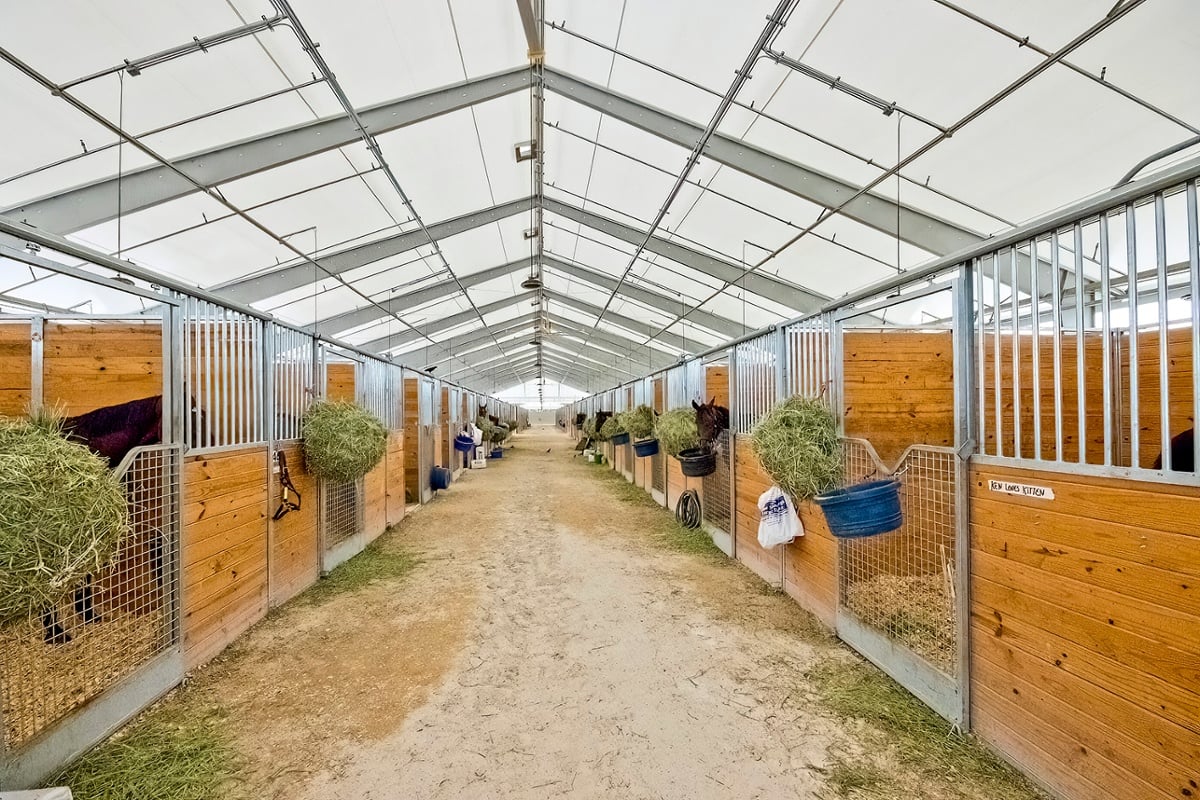Optimize Energy Costs with Tension Fabric Buildings

The short answer? Yes. Naturally you will want a little more context than that, as there is a lot that makes a building function; just like there is a lot to consider when choosing the building that is right for you. Rest assured that we at Legacy Building Solutions have thought of a lot and have engineered our designs over the last decade to deliver something amazing.
The Most Bang for Your Buck
There are a few major ways that tension fabric structures can aid in energy savings and by proxy have a high return on investment (ROI). Some of these can be circumstantial, so bear in mind that every situation is unique, and these are general ways we can provide energy efficiency for your project. A few of those ways are natural light, impressive engineering, and the natural state of fabric.
Natural light is a resource fabric structures can take advantage of in an uninsulated building. Our white PVC fabric cladding has twelve percent translucency in an uninsulated building, allowing significant natural light to filter into your space. Furthermore, a bright white fabric liner in our insulated buildings is good for reflecting any light around, so you do not need as many lights to illuminate a large area. This can save you money in the long run because the need for artificial lighting is not as high with the combined force of clean white fabric and/or natural light. Shed some light on this by reading up on natural light in our whitepaper here!
Thermally non-conductive properties make for budget-friendly buildings. Fabric has thermally non-conductive properties, much less conductive of hot or cold than that of steel or concrete. So, fabric helps make the building feel cooler on hot days and warmer on cold days. This applies even when the building is uninsulated. Fabric’s conductivity helps save on heating or cooling bills as the fabric does not minimize the impact of the insulation as much as buildings made with highly conductive materials.
Passive airflow has more to do with the design of our buildings than the fabric itself, but we still count it because it is a great feature. Passive ventilation, or gravity ventilation, is defined by using the air pressure differences due to hot hair naturally rising and drawing air from the eaves, then venting out of the peak of the building. This provides optimal air flow and an improved air quality, and you can often save money on loud, expensive units. There are a couple ways to achieve this effect, such as cross ventilation and stack ventilation. To learn more about passive ventilation, check out our article Passive Ventilation Systems In Fabric Structures from our blog!
Important Features of Fabric
We’ve discussed how tension fabric structures can save you money by using natural resources and impressive engineering, but we think there are a couple of other facets of fabric that must be mentioned. Check out all of our features on our site here.
Corrosion-resistance is a major plus for your building project. Many buildings are plagued by corrosion either from corrosive materials inside the building or corrosive elements around the building. Legacy’s epoxy coatings can provide a barrier coating for the steel framework, thus minimizing the impact of corrosion on the frame. The fabric provides a significant benefit related to corrosion as the threat is eliminated due to it being naturally inert to corrosion. This is especially helpful to industries that need to store corrosive chemicals, such as fertilizers in bulk storage or buildings close to the ocean.
Strength and resilience of the fabric may be called into question because the stigma is that fabric is flimsy. But let us put those fears to rest. We have our own proprietary fabric, ExxoTec™, and its tensile strength has been strength tested by driving a ten-thousand-pound skid loader suspended in the air by a fabric sample. No damage was sustained to the fabric, frames, or our patented attachment system, and although the fabric stretched from the weight, it fully re-tensioned itself within twenty-four hours. It is a PVC fabric, which is much stronger than polyethylene. It is manufactured with seven layers to achieve the highest performance; two layers of lacquer, two of primer, two of topcoat, and the base fabric. These coating and finish layers allow for a longer service life. You can learn more about our ExxoTec™ fabric in this video on our YouTube channel!
Tension Fabric Structures and You
In using a tension fabric building for your project, you are saving money in the long run. Choosing fabric is choosing energy efficiency. You’ll save money with natural light, non-conductive, passive airflow, corrosion resistance, and strength on your side. Tension fabric structures are incredible buildings, and the way they can reduce energy costs is just one of many reasons why.
Subscribe to our Blog
Recent Posts
- 5 Factors Every Project Owner Should Consider Before Approving Building Materials
- The 20-Year View: How Material Choices Impact Long-Term Operational Costs
- Climate Resilience in Commercial Construction: Why Traditional Methods May Not Be Enough
- Speed and Quality: The Role of Hybrid Building Materials
- Beyond the Bleachers: Designing Visually Striking Sports Facilities
